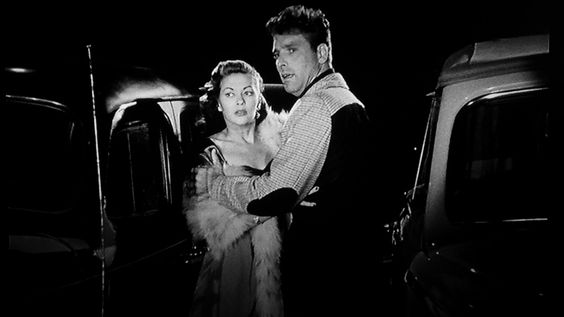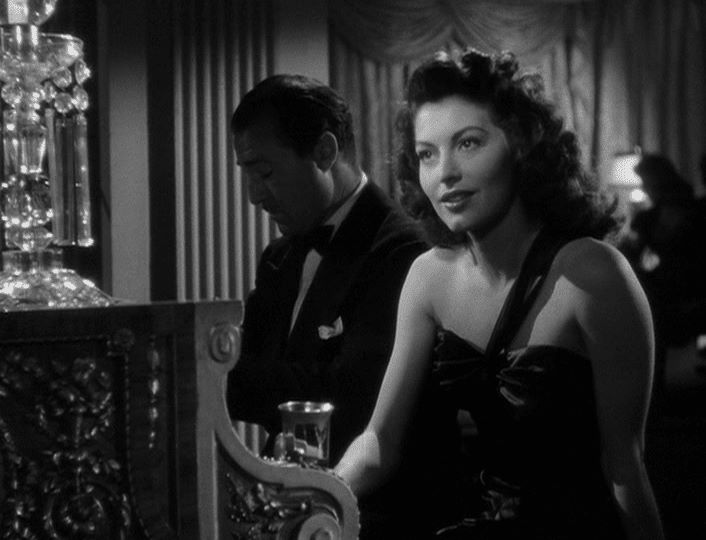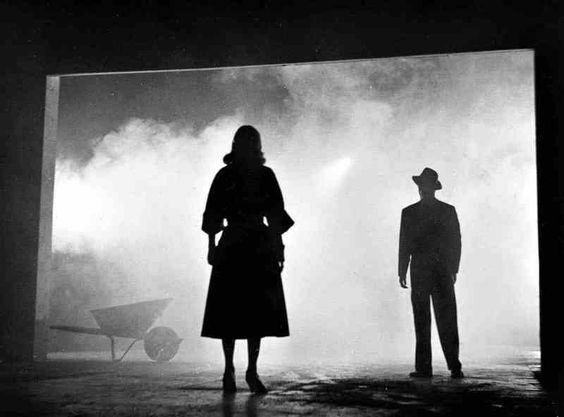What is Film Noir? (Thumbnail knowledge)
Film Noir was a movement in primarily American movies made during and after World War II that was recognized & identified by French critics in the mid-fifties. After American films had been banned during WWII, the French were inundated when the embargo was lifted after Paris’ liberation. Seeing so many films in a short period of time led the observant to notice that patterns in content, theme & construction reflected a darker & more violent undercurrent in American culture. They dubbed these films, primarily B-movies, but with A-list casts sprinkled in, Film Noir. Many of the films were based on pulp fiction which took off in the late 30’s & a contained acts of murder, adultery, & many forms of nefarious crime. Authors like Dashiell Hammett, James M. Cain, Raymond Chandler & David Goodis cut their teeth creating pulp novels before moving to Hollywood. There also emerged a new female architype, the Femme Fatale, who often led a normally good man to ruin, murder or death. Thematically, the films were tied together by often making the heroes genuinely bad people, but forcing the audience to not only identify with them, but to root for their success.
Visually, the films were linked by a reliance on the play between light & dark. Cinematographers utilized chiaroscuro lighting (originating from the Italian Renaissance) whereby light was held in high contrast to darkness to create dead areas on screen & provide mystery & a sense of doom. Often, the screen would be lit only with spot lights that created mere pools of light surrounded by pitch black. Similarly, scenes were often shot through vertical, diagonal and/or horizontal lines, like venetian blinds or stair rails, to give the sense of closed space or imprisonment. Low camera angles also contributed to the menace as sinister characters loomed over the victim. Most of these concepts were first utilized in the late 20’s & early 30’s in German films & were dubbed German expressionistic techniques. Many directors who rose to prominence making Films Noir were German emigrants to America like Billy Wilder, Fritz Lang & Robert Siodmak, among many others.
Many Films Noir have a jagged structure that is often punctuated by flashback sequences that show the downfall of the hero after his demise. Because the content generally flew in the face of the strict censorship guidelines of the time, writers, directors & editors often masked the more violent & gruesome acts in shadow, in effect actually creating more titillation in the audiences’ minds by doing so.
While the classic era of film Noir lasted a mere 17 years, the hundreds of films made in this time created a lasting impression of filmmakers around the world & has spawned countless neo-Noir classics like Chinatown & LA Confidential, not to mention a wealth of foreign Noirs from masters like Jean-Pierre Melville (Le Samurai), Luchino Visconti (Ossessione), Akira Kurosawa (Stray Dog) & Henri-George Cluzot (La Verite), among others. From the film often credited as the first Film Noir, Jon Huston’s The Maltese Falcon (’41) to the last of the classic Noirs, Orson Welles’ Touch of Evil (’58) a lot changed, but you could always count on a little evil wherever the darkness fell.
Film Noir was a movement in primarily American movies made during and after World War II that was recognized & identified by French critics in the mid-fifties. After American films had been banned during WWII, the French were inundated when the embargo was lifted after Paris’ liberation. Seeing so many films in a short period of time led the observant to notice that patterns in content, theme & construction reflected a darker & more violent undercurrent in American culture. They dubbed these films, primarily B-movies, but with A-list casts sprinkled in, Film Noir. Many of the films were based on pulp fiction which took off in the late 30’s & a contained acts of murder, adultery, & many forms of nefarious crime. Authors like Dashiell Hammett, James M. Cain, Raymond Chandler & David Goodis cut their teeth creating pulp novels before moving to Hollywood. There also emerged a new female architype, the Femme Fatale, who often led a normally good man to ruin, murder or death. Thematically, the films were tied together by often making the heroes genuinely bad people, but forcing the audience to not only identify with them, but to root for their success.
Visually, the films were linked by a reliance on the play between light & dark. Cinematographers utilized chiaroscuro lighting (originating from the Italian Renaissance) whereby light was held in high contrast to darkness to create dead areas on screen & provide mystery & a sense of doom. Often, the screen would be lit only with spot lights that created mere pools of light surrounded by pitch black. Similarly, scenes were often shot through vertical, diagonal and/or horizontal lines, like venetian blinds or stair rails, to give the sense of closed space or imprisonment. Low camera angles also contributed to the menace as sinister characters loomed over the victim. Most of these concepts were first utilized in the late 20’s & early 30’s in German films & were dubbed German expressionistic techniques. Many directors who rose to prominence making Films Noir were German emigrants to America like Billy Wilder, Fritz Lang & Robert Siodmak, among many others.
Many Films Noir have a jagged structure that is often punctuated by flashback sequences that show the downfall of the hero after his demise. Because the content generally flew in the face of the strict censorship guidelines of the time, writers, directors & editors often masked the more violent & gruesome acts in shadow, in effect actually creating more titillation in the audiences’ minds by doing so.
While the classic era of film Noir lasted a mere 17 years, the hundreds of films made in this time created a lasting impression of filmmakers around the world & has spawned countless neo-Noir classics like Chinatown & LA Confidential, not to mention a wealth of foreign Noirs from masters like Jean-Pierre Melville (Le Samurai), Luchino Visconti (Ossessione), Akira Kurosawa (Stray Dog) & Henri-George Cluzot (La Verite), among others. From the film often credited as the first Film Noir, Jon Huston’s The Maltese Falcon (’41) to the last of the classic Noirs, Orson Welles’ Touch of Evil (’58) a lot changed, but you could always count on a little evil wherever the darkness fell.





